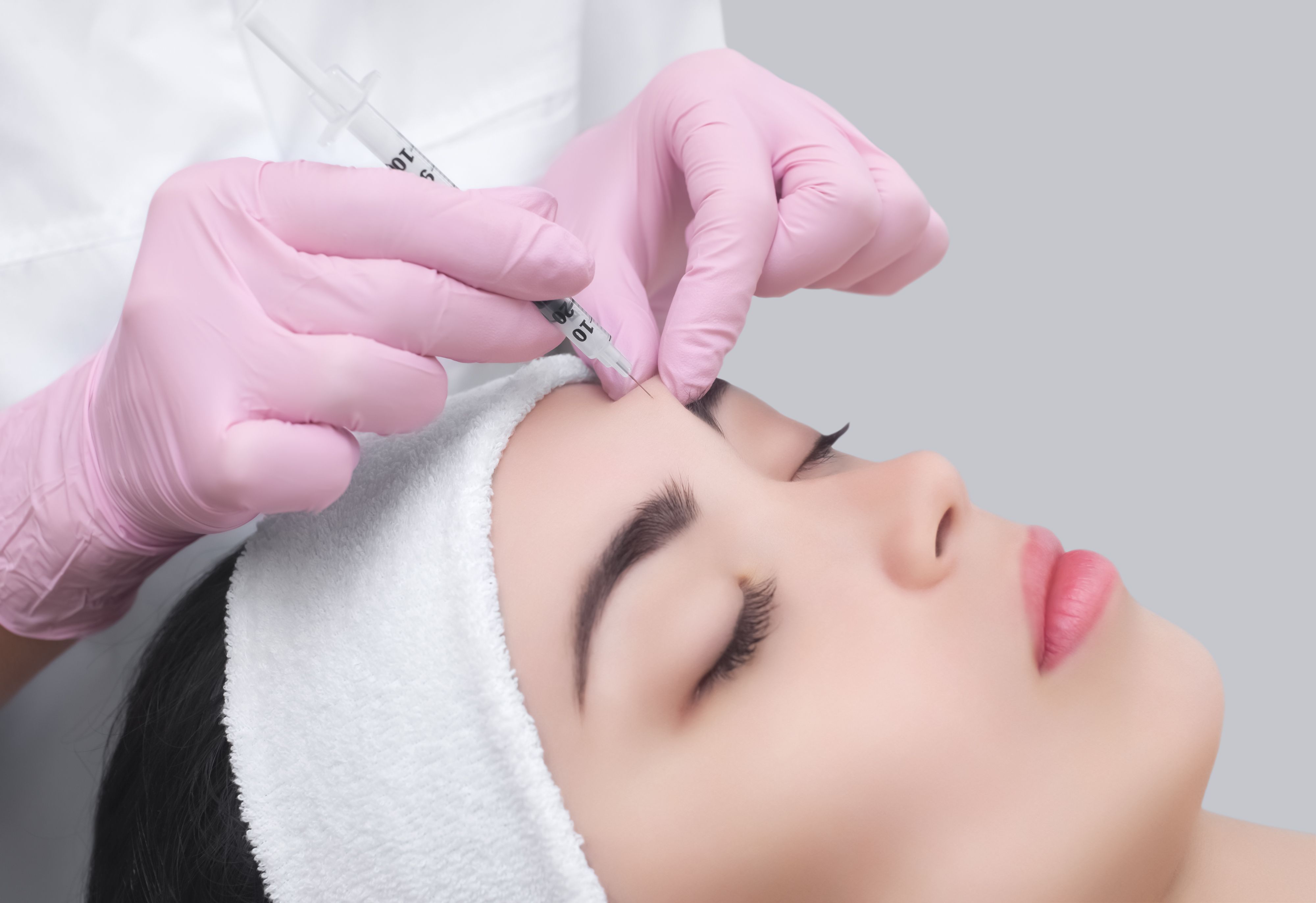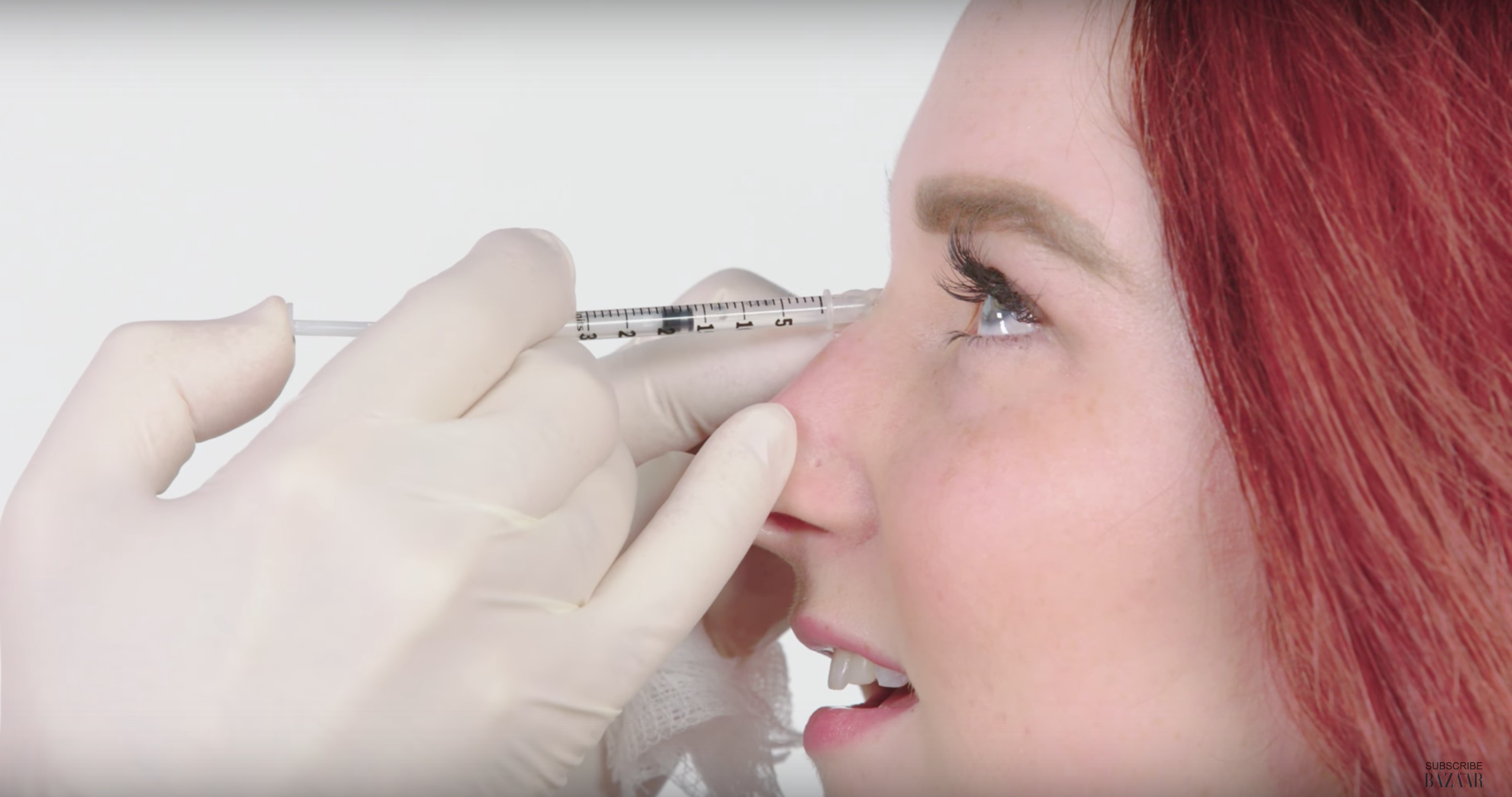Everything You Need to Know About Under Eye Filler for Dark Circles
You’ve tried every concealer under the sun. Yes, even Shape Tape and Radiant Creamy Concealer. You have empty jars of eye cream lining your medicine cabinet. Maybe you’ve even seen a doctor or two. But your dark circles are still there—no matter how much sleep you get or how much water you drink. The sad, cold truth is that they will probably always be there. You see, dark circles are mostly genetic. They have more to do with the composition of your skin and the way light reflects off your orbital bone than they do with your coffee consumption.
There is one procedure you can try to at least minimize the appearance of the dark circles for a short while—but it might hurt. Over the last few years, women have been turning to plastic surgeons and cosmetics dermatologists to get hyaluronic acid fillers injected under their eyes. You might think: wait, I don’t want puffier under-eyes! Why would I do that?
How Does Under-Eye Filler Work?
“The number one reason I see dark circles under the eyes is because of volume loss in the tear trough,” says Heidi A. Waldorf, director of cosmetic and laser dermatology at Mount Sinai Medical Center in New York City.
We asked Waldorf to evaluate six women—all who complained about persistent dark under-eye circle—and give them a boost of filler. It turns out, a small layer of expertly applied hyaluronic acid gel is all you need to lift the delicate skin up and away from the blood vessels under your eyes. Though you’ll look a little red and bruised for a day or two, pretty soon your eye area will appear noticeably brighter. “At a certain point we know no amount of cover-up is going to cover-up a hollow. It’s really freeing to know that you can go to the gym, go to yoga, and not have to put cover-up on,” says Waldorf.
How Much Does It Cost?
The cost varies by location and and how much filler you need, but expect to pay anywhere between $1,000 to $2,500. Some doctors will only inject both under the eye and the surrounding cheek area to create better symmetry, which requires more filler and drives the price up.
How Long Does It Last?
The hyaluronic acid gel should last anywhere between six months to just over a year, depending on how quickly you metabolize it and the type of filler used (Restylane, Restylane Lift, Juvederm, etc.). The gel dissolves slowly over time. If you want to dissolve the filler quickly after the procedure for any reason, you can ask your doctor about hyaluronidase, an enzyme that breaks down hyaluronic acid fillers.
What Are the Risks?
As with any injection treatment, be sure your provider is a board-certified dermatologist or plastic surgeon with experience in injections under the eye. The filler needs to be placed quite deep, not superficially, so it doesn’t appear too puffy or visible under the delicate under-eye skin. Bruising is common in this area (if you’ve ever had a black eye, you know why), but it should reside in about a week or two. If you’re prone to bruising or currently on blood thinners or taking fish oil, an arnica treatment may help minimize bruising.
Are There Other Ways To Reduce Dark Circles?
If your dark circles aren’t the result of shadows caused by hollows under your eye, filler might not solve the problem. Largely genetic, dark circles can also be caused by dehydration, lack of sleep, excess pigmentation, and blood vessels. You can try eye creams with retinol and/or vitamins C and K to help with cellular turnover and pigmentation. Lasers can also help diminish the look of darkness under the eye, especially if it’s caused by visible blood vessels. Your dermatologist can decide the best course of action by determining the root cause of your dark circles.
Source: Read Full Article


